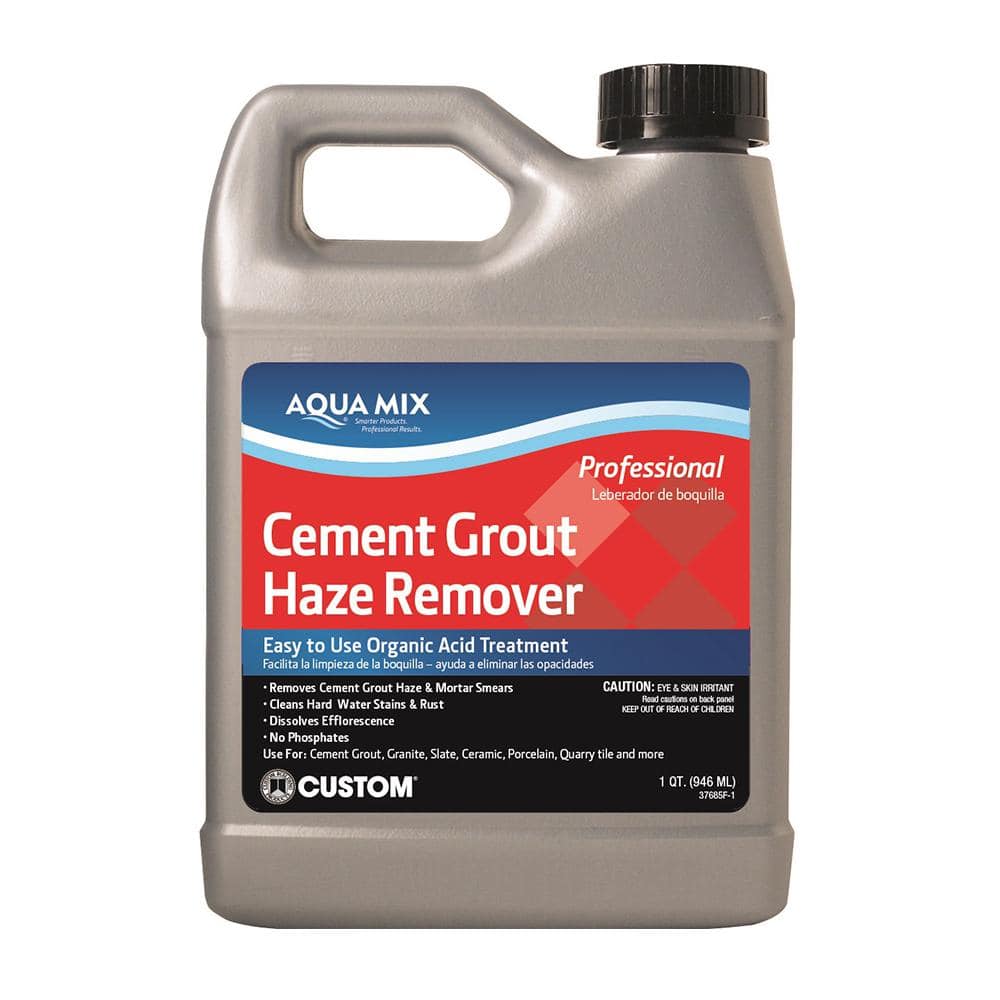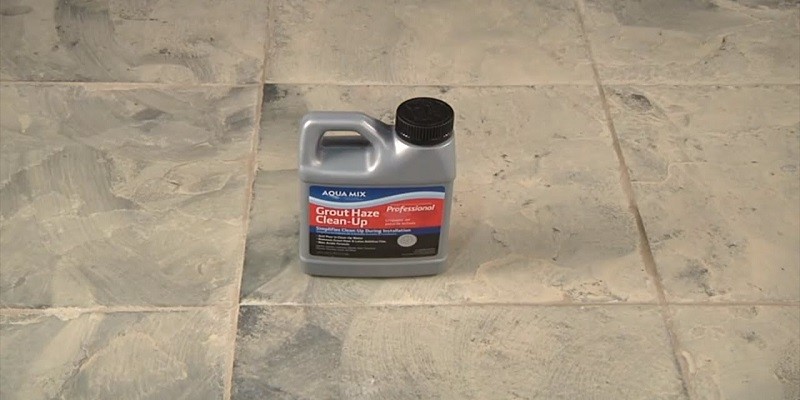Last Updated on January 15, 2025
To remove grout haze, use a mixture of vinegar and water or a commercial grout haze remover. Scrub the affected area gently with a sponge or brush, then rinse thoroughly with clean water.
Properly ventilate the area while working. Here’s a detailed explanation of how to remove grout haze. Grout haze can be a common issue after installing tiles. It occurs when a thin layer of grout residue remains on the tile surface after the grouting process, leaving a cloudy or hazy appearance.
However, you can easily remove grout haze by using a few simple techniques. We’ll discuss various methods and solutions to effectively get rid of grout haze and achieve a clean, polished tile surface. Whether you prefer homemade remedies or commercial products, we have got you covered. So let’s dive into the step-by-step process and get your tiles looking pristine again.
Grout Haze And Its Causes
Grout haze can be quite frustrating, but understanding its causes is essential for effective removal. Discover how to remove grout haze with these helpful tips.
Grout haze can be a frustrating issue when it comes to tiling projects. It refers to a cloudy, film-like residue that appears on the surface of tiles after the grouting process. This haze can greatly affect the overall appearance of the tiles, making them look dull and dirty.
It is important to understand the causes of grout haze in order to effectively remove it and restore the beauty of your tiled surfaces.
What Is Grout Haze?
Grout haze is a thin layer of grout residue that remains on the surface of tiles after the grouting process. It is typically caused by the improper cleaning and removal of excess grout during installation. The grout particles settle on the tiles and create a hazy film that can be difficult to remove.
Grout haze can occur on both ceramic and natural stone tiles, and it is important to address it promptly to prevent it from becoming more difficult to remove over time.
The Causes Of Grout Haze:
- Insufficient cleaning during the grouting process: When excess grout is not properly removed from the tile surface immediately after installation, it can dry and leave behind a haze.
- Using the wrong grout consistency: If the grout is mixed too wet or too dry, it can contribute to the formation of grout haze.
- Using too much water during the grouting process: Excessive water can weaken the grout mixture, causing it to dry improperly and leaving behind haze.
- Using the wrong cleaning agents: Some cleaning products can interact with the grout, causing it to haze or discolor.
How Grout Haze Affects The Appearance Of Tiled Surfaces:
- Dulls the tiles’ shine and clarity: Grout haze can create a cloudy layer that obscures the true color and shine of the tiles, making them appear dull and lackluster.
- Makes the tiles look dirty and unattractive: The hazy film can trap dirt and grime, making the tiles look dirty even after cleaning.
- Difficult to remove completely: If grout haze is not addressed promptly, it can become more stubborn and difficult to remove over time. This can require more extensive cleaning methods and potentially damage the tiles.
To ensure a flawless tiled surface, it is essential to understand the causes of grout haze and take appropriate measures to prevent and remove it. In the next section, we will explore effective methods to remove grout haze and restore the beauty of your tiles.
Preparing The Surface For Grout Haze Removal
Preparing the surface for grout haze removal is an essential step in effectively removing grout haze. By following these steps, you can ensure a clean and smooth surface for your tiles.
Before you can effectively remove grout haze from your tiled surface, it’s important to properly prepare the area. This will ensure that the removal process is successful and that your tiles are left looking clean and pristine. Below are the steps to take in order to prepare the surface:
Cleaning the tiled surface before removal:
- Thoroughly clean the tiles using a mild detergent and warm water. This will remove any dirt, dust, or debris that may be present on the surface.
- Use a soft-bristle brush or sponge to gently scrub the tiles, paying close attention to any areas where grout haze is visible.
- Rinse the tiles with clean water to remove any soapy residue.
Identifying the type of grout haze:
- Grout haze can be divided into two main types: Cementitious haze and latex haze.
- Cementitious haze is caused by the cement in the grout and is typically more difficult to remove.
- Latex haze, on the other hand, is a thinner layer of grout that can often be removed more easily.
Gathering the necessary tools and materials:
To effectively remove grout haze, you will need the following tools and materials:
- A grout haze remover solution or a mixture of vinegar and water.
- A soft cloth or sponge for applying the solution.
- A scrub brush or nylon scrub pad for agitating the surface.
- Clean water and a bucket for rinsing the tiles.
- A clean, dry cloth for drying the surface.
By following these steps and ensuring that the surface is properly prepared, you will be ready to tackle the grout haze removal process. Stay tuned for our upcoming sections on the actual removal techniques for both cementitious and latex grout haze.
Effective Methods For Removing Grout Haze
Grout haze can be effectively removed using simple methods such as vinegar and water solution, a grout haze remover, or by buffing it with a dry cloth. These methods help restore the appearance of tiles and leave them looking clean and shiny.
Grout haze can be a stubborn and unsightly problem that occurs after tiling and grouting. Fortunately, there are several effective methods for removing grout haze, whether you prefer using a commercial grout haze remover, a homemade solution, or a grout haze eraser.
Read on to discover these methods and say goodbye to grout haze for good.
Method 1: Using A Commercial Grout Haze Remover
If you’re looking for a quick and convenient way to remove grout haze, a commercial grout haze remover is your best bet. Here’s how you can use it effectively:
- Start by reading the instructions on the grout haze remover product carefully.
- Ensure that the affected areas are clean and dry before proceeding.
- Apply the grout haze remover directly to the grout haze, using a sponge or a soft bristle brush.
- Allow the remover to sit for the recommended amount of time, usually around 5-10 minutes.
- Gently scrub the grout haze with the brush or sponge, applying moderate pressure.
- Rinse the area with clean water to remove any residue.
This method can be highly effective in breaking down and removing grout haze, leaving your tiles looking clean and flawless.
Method 2: Creating A Homemade Grout Haze Remover
If you prefer a more natural approach or want to save some money, you can make your own grout haze remover using a simple vinegar and water solution. Follow these steps:
- Mix equal parts of vinegar and water in a spray bottle.
- Spray the solution generously onto the grout haze.
- Allow the solution to sit for a few minutes to penetrate the haze.
- Scrub the grout haze with a brush or a sponge, applying gentle pressure.
- Rinse the area thoroughly with clean water to remove any residue.
The acidic properties of vinegar help to dissolve the grout haze, making it easier to remove. Plus, it’s a safe and eco-friendly option.
Method 3: Using A Grout Haze Eraser
For small areas of grout haze or touch-ups, a grout haze eraser can be a convenient tool. Here’s how to use it effectively:
- Ensure that the affected area is clean and dry.
- Take the grout haze eraser and rub it directly on the grout haze, using circular motions.
- Apply moderate pressure while rubbing, but be careful not to damage the surrounding tiles.
- Wipe away any residue with a clean cloth, ensuring that the haze is completely removed.
Grout haze erasers are designed specifically for removing grout haze and are highly effective at getting rid of the problem quickly.
With these effective methods at your disposal, you can tackle grout haze easily and restore the beauty of your tiled surfaces. Whether you choose a commercial grout haze remover, a homemade solution, or a grout haze eraser, you’ll be able to enjoy clean and haze-free tiles in no time.
Post-Grout Haze Removal Maintenance
Learn effective techniques for removing grout haze with our post-grout haze removal maintenance guide. Discover the best practices for eliminating grout residue and achieving a flawless tile installation.
Grout haze can be a frustrating issue to deal with after completing a tile installation. But don’t worry, we’ve got you covered! In this section, we’ll discuss some essential post-grout haze removal maintenance tips to ensure a haze-free surface. From cleaning and rinsing the surface thoroughly to sealing the grout and regular maintenance, we’ll cover it all.
Cleaning And Rinsing The Surface Thoroughly:
To remove grout haze effectively and prevent it from reappearing, follow these steps:
- Use a grout haze remover solution specifically designed for the type of tile and grout you have.
- Apply the solution according to the manufacturer’s instructions, ensuring complete coverage of the affected areas.
- Gently scrub the surface with a grout brush or soft sponge to loosen and remove the grout haze.
- Rinse the surface thoroughly with clean water to remove any residual haze remover solution.
Sealing The Grout To Prevent Future Haze:
Sealing the grout is an important step that helps in preventing future grout haze. Here’s how you can do it:
- Allow the grout to cure completely before applying the sealer. Refer to the manufacturer’s instructions for the curing time.
- Choose a high-quality grout sealer that is suitable for your type of grout and tile.
- Apply the sealer evenly to the grout lines using a small brush or sponge applicator.
- Let the sealer penetrate into the grout for the recommended amount of time.
- Wipe off any excess sealer from the tile surface using a clean cloth or paper towel.
Regular Maintenance Tips To Keep The Surface Haze-Free:
To maintain a haze-free surface, follow these simple tips:
- Avoid using harsh cleaning agents or abrasive cleaners on the tiled surface, as they can cause damage or remove the grout sealer.
- Clean the surface regularly using a mild, pH-neutral tile and grout cleaner.
- Wipe up spills and stains promptly to prevent them from seeping into the grout lines.
- Use a soft, non-abrasive brush or sponge for regular cleaning to avoid scratching the tile or grout.
- Consider using a grout and tile cleaner with a built-in sealer to provide continuous protection against grout haze.
By following these post-grout haze removal maintenance tips, you can keep your tiled surface looking pristine and grout haze-free. Incorporate these practices into your regular cleaning routine to ensure long-lasting beauty and durability. So, say goodbye to grout haze and hello to a spotless, gleaming tile surface!

Credit: www.homedepot.com
Frequently Asked Questions Of How To Remove Grout Haze?
Will Vinegar Remove Grout Haze?
Yes, vinegar can effectively remove grout haze. Vinegar has acidic properties that can break down the mineral deposits left behind on the grout surface. Applying undiluted vinegar directly on the haze and allowing it to sit for a few minutes can help loosen and dissolve the residue.
Using a scrub brush or sponge, gently scrub the vinegar into the grout lines. Rinse with water and repeat the process if necessary. Keep in mind that vinegar should not be used on natural stone surfaces as it can cause etching.
Always test a small area before applying vinegar to larger sections of grout. Additionally, proper ventilation is important when using vinegar due to its strong smell. Overall, vinegar is a natural and cost-effective solution for removing grout haze.
What Is The Best Chemical To Remove Grout Haze?
The best chemical to remove grout haze is an acidic cleaner specifically designed for grout. Use a cleaner with a low pH level to effectively remove grout haze from the surface. Make sure to follow the instructions provided by the manufacturer when applying the cleaner.
It is important to wear gloves and protective eyewear while using the cleaning solution. Apply the cleaner to the affected area and let it sit for a few minutes before scrubbing it with a scrub brush or sponge. Rinse the area thoroughly with water after scrubbing to remove any remaining residue.
Avoid using acidic cleaners on natural stone surfaces as they can cause damage. Always test the cleaner on a small, inconspicuous area before applying it to the entire surface to ensure compatibility.
Can Grout Haze Ruin Tile?
Grout haze can potentially ruin the appearance of tile.
How Do You Remove White Residue From Grout?
To remove white residue from grout, follow these steps: Firstly, mix equal parts of vinegar and water in a spray bottle. Then, spray the solution onto the white residue and let it sit for about 15 minutes. Next, scrub the grout using a brush or toothbrush.
Rinse the area with warm water and wipe it dry. If the white residue persists, try using a mixture of baking soda and water instead of the vinegar solution. Apply the paste to the residue, scrub gently, and rinse with warm water.
Repeat these steps until the white residue is completely removed. Remember to wear gloves and ensure proper ventilation when using cleaning solutions. Regular maintenance, such as wiping down grout after showers, can help prevent the buildup of white residue.
Conclusion
To effectively remove grout haze, it is essential to follow proper techniques and use the right tools. By considering the type of tile and grout, as well as utilizing a vinegar and water solution, you can tackle this common issue.
Start by mixing equal parts of white vinegar and water, applying it to the haze with a sponge or cloth. Gently scrub the area in circular motions, paying attention to any stubborn spots. Rinse the surface thoroughly with clean water, ensuring all residue is removed.
For tougher grout haze, a commercial grout haze remover can be utilized. Remember to read the instructions and use protective gear when working with chemicals. Taking the time to remove grout haze properly will result in a clean, beautiful finish for your tile installation project.










